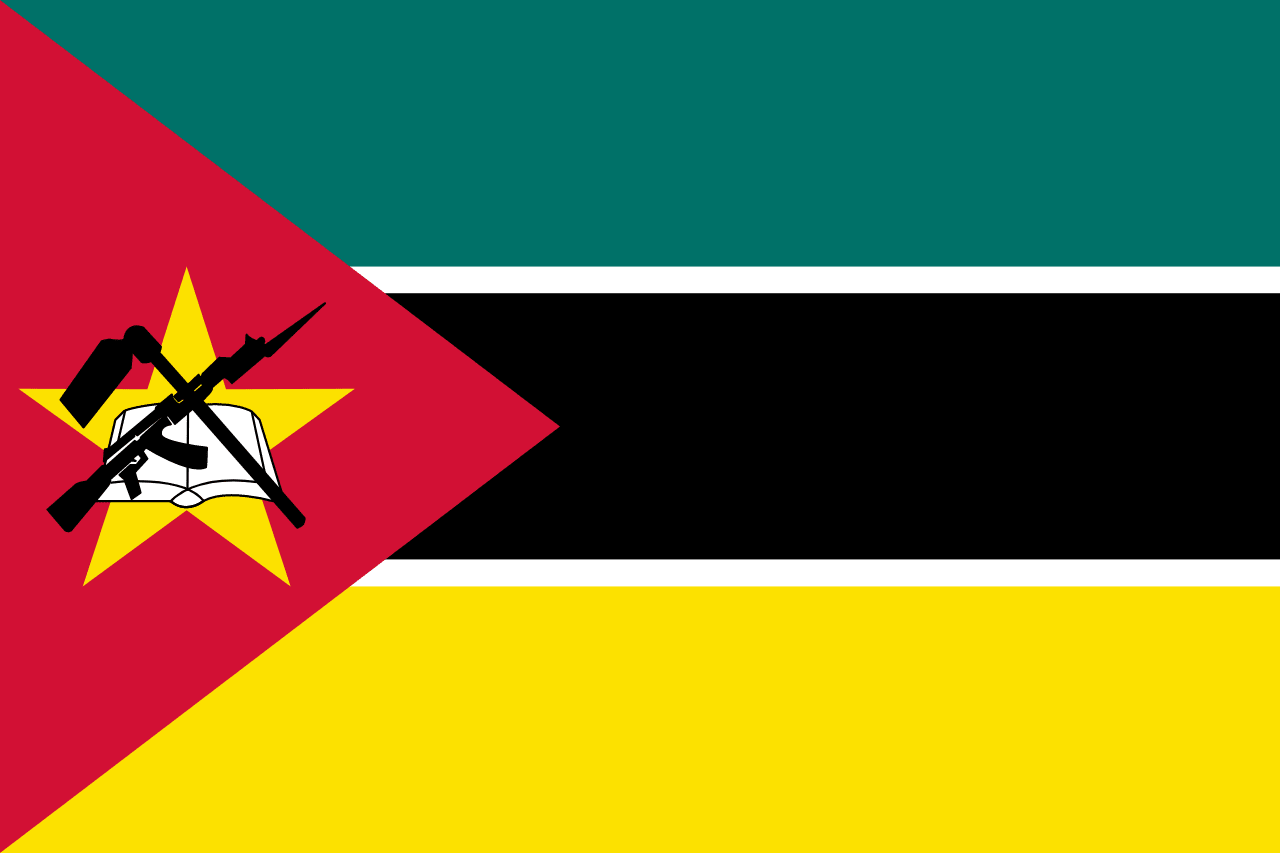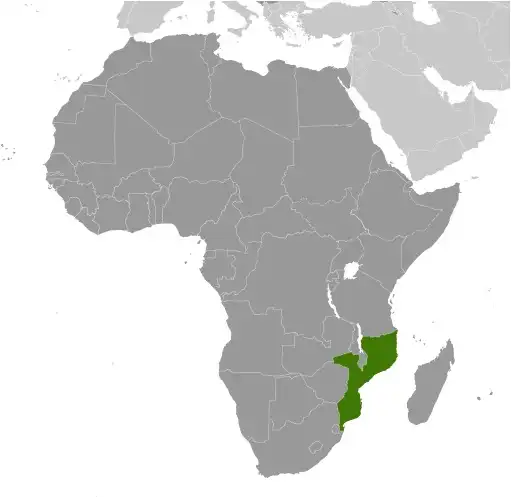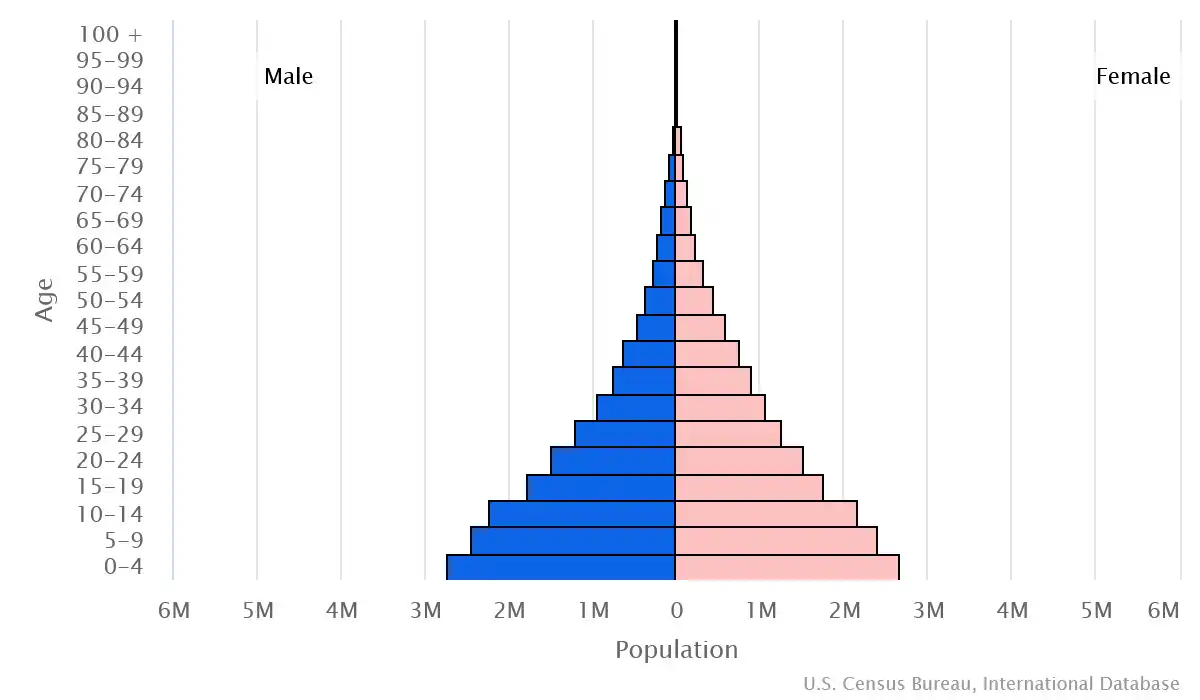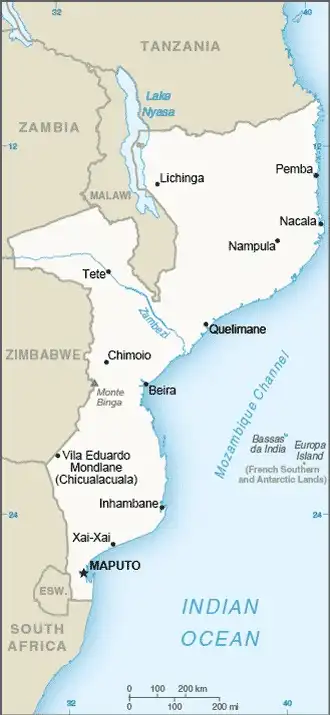
Mozambique Country Profile
Key Facts of Mozambique

| Government type: | presidential republic |
| Capital: | Maputo |
| Languages: | Makhuwa 26.1%, Portuguese (official) 16.6%, Tsonga 8.6%, Nyanja 8.1, Sena 7.1%, Lomwe 7.1%, Chuwabo 4.7%, Ndau 3.8%, Tswa 3.8%, other Mozambican languages 11.8%, other 0.5%, unspecified 1.8% (2017 est.) |
Mozambique Demographic Data
Ethnic Groups in Mozambique(2017 est.)
Religious Groups in Mozambique (2017 est.)
Age pyramid of Mozambique

Mozambique Economy Statistics
Economic overview of Mozambique
low-income East African economy; subsistence farming dominates labor force; return to growth led by agriculture and extractive industries; Islamist insurgency threatens natural gas projects in north; ongoing foreign debt restructuring and resolution under IMF Highly Indebted Poor Countries (HIPC) initiative
Mozambique Real GDP (purchasing power parity) in Billion $
Mozambique Real GDP per capita in $
Mozambique's Exports & Imports in billion $
Top 5 Import Partnerin 2022 (70%) of Mozambique
Top 5 Import Commodities in 2022 of Mozambique
- ships 🚢
- refined petroleum ⛽
- iron alloys 🪓
- chromium ore 🟩
- refined copper 🟧🪙
Top 5 Export Partnerin 2022 (52%) of Mozambique
Top 5 Export Commodities in 2022 of Mozambique
- coal ⚫
- aluminum 🪙
- coke 🪨
- natural gas 💨
- gold 💰
Geography of Mozambique
Map of Mozambique

Land and Water Distrubtion of Mozambique
Natural Resources of Mozambique
- coal ⚫
- titanium 🪙
- natural gas 💨
- hydropower 💧⚡
- tantalum 🪙
- graphite ✏️
Climate inMozambique
tropical to subtropical
History of Mozambique - a Summary
In the first half of the second millennium A.D., northern Mozambican port towns were frequented by traders from Somalia, Ethiopia, Egypt, Arabia, Persia, and India. The Portuguese were able to wrest much of the coastal trade from Arab Muslims in the centuries after 1500, and they set up their own colonies. Portugal did not relinquish Mozambique until 1975. Large-scale emigration, economic dependence on South Africa, a severe drought, and a prolonged civil war hindered the country's development until the mid-1990s.
The ruling Front for the Liberation of Mozambique (FRELIMO) party formally abandoned Marxism in 1989, and a new constitution the following year provided for multiparty elections and a free-market economy. A UN-negotiated peace agreement between FRELIMO and rebel Mozambique National Resistance (RENAMO) forces ended the fighting in 1992. In 2004, Mozambique underwent a delicate transition as Joaquim CHISSANO stepped down after 18 years in office. His elected successor, Armando GUEBUZA, served two terms and then passed executive power to Filipe NYUSI in 2015. RENAMO’s residual armed forces intermittently engaged in a low-level insurgency after 2012, but a 2016 cease-fire eventually led to the two sides signing a comprehensive peace deal in 2019.
Since 2017, violent extremists -- who an official ISIS media outlet recognized as ISIS's network in Mozambique for the first time in 2019 -- have been conducting attacks against civilians and security services in the northern province of Cabo Delgado. In 2021, Rwanda and the Southern African Development Community deployed forces to support Mozambique’s efforts to counter the extremist group.
